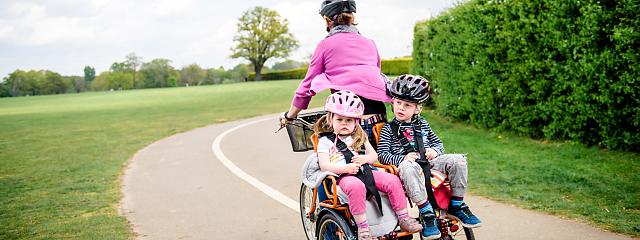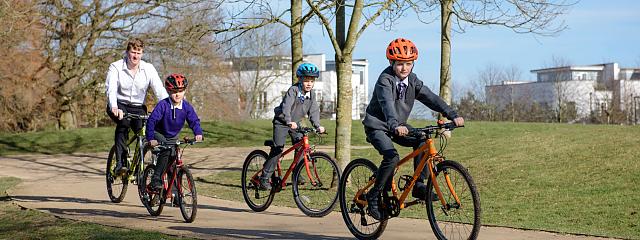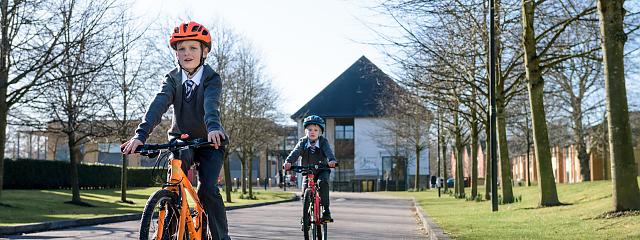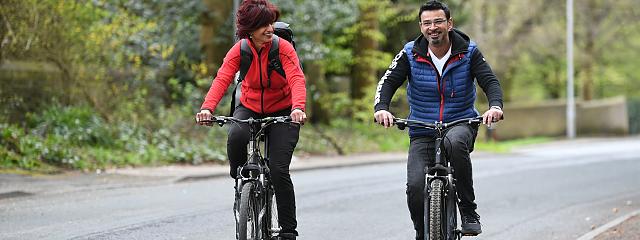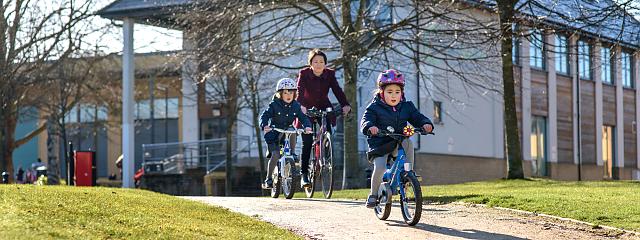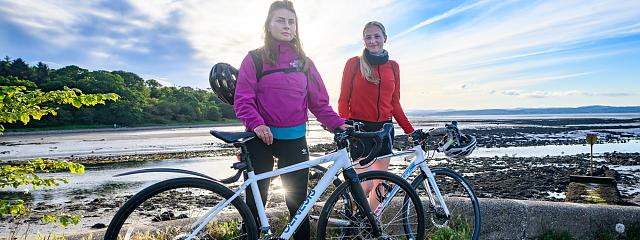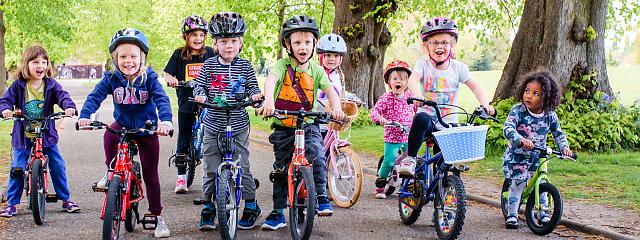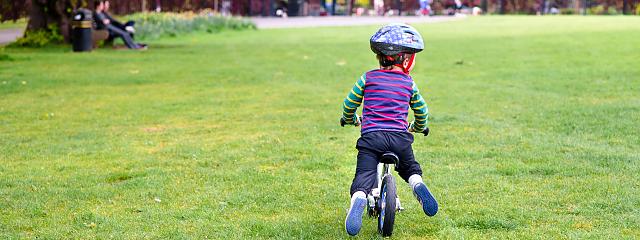10 tips to help you cycle to school
Monday, 21 March 2022
10 tips to help you cycle to school
There’s no denying that cycling to school is a great way to build physical activity into everyday life while improving fitness and mental wellbeing. In fact, teachers find that pupils who don’t arrive by car are more relaxed, alert and ready to start the day. In addition, riding a bike provides the perfect opportunity for kids to learn about their local area, develop wider social networks and gain independence.
- Be prepared. Mornings are a busy time for parents and it can be overwhelming getting the kids ready to cycle on top of all the things that need to be done before setting off. However, with a little preparation, cycling can be the best way to travel to school. Pack bags the night before and leave helmets by the front door, so in the morning you can just get up and go.
- Choose an easy route. Take a smooth, flat route so that it’s suitable for younger cyclists. You’ll be surprised by how many quiet roads or back streets there are in your area that lead to school. The National Cycle Network is also a great alternative as it passes through the centre of every major town in the UK, while canal towpaths and routes through parks are a good option if accessible.
- Make it fun. Ease in with small trips to the park and build up to the journey to school. Keep younger children entertained by talking about what you see throughout the journey. This will help them to get to know their local area and feel part of it, while also making the ride more fun.
- Mix it up. For busy families, different ways of journeying to school will work for different days. Walking, scooting, cycling and park and stride are all good options, so do what works best for you.
- Be safe. The biggest concern for adults when it comes to children cycling to school is danger from traffic. This fear has driven children into the backseat to be ferried around, with 42% of primary pupils now being driven to school. For those concerned about safety, ride in a line with children in the middle of adults for maximum protection and visibility. If there’s only one adult, take up a position at the back to ensure all children are in plain view.
- Take part in cycle training. Courses like Bikeability are great and have come on a long way since cycling proficiency began. Cycle training teaches valuable skills, such as good road positioning, signalling and visibility and can help parents and children feel at ease on busy streets.
- Choose the right bike or scooter. Try to purchase a bike that is the right size and avoid the temptation to buy one which is too big, so that they can ‘grow into it’. This is important because a large bike will be more difficult to control and can put young children off cycling.
- Reduce traffic around the school gates. We understand that cycling isn’t always a viable choice for families. As a driver, there are precautions you can take to make the environment around the school gates as child-friendly as possible. For example, why not park your car away from school and walk and cycle the rest of the journey to help ease congestion.
- Try using a cargo bike. Parents with very young children are often put off cycling to school as space on a single bike is limited. Think again. Gone are the days when the only way to take a passenger on your bike was to 'give them a backie’ – there's now a vast choice of safe and stylish ways to transport your children. Cargo bikes, in particular the box-bike style, are ideal for transporting young children around. Depending on the type (and the size and age of your children) it can be possible to transport up to four with space for other cargo as well.
- Purchase or hire the correct bike accessories. Carrying heavy books and equipment is often seen as a barrier to cycling or scooting to school. However, panniers fitted to a rack on a bike are the best solution, although a small backpack may also be sufficient. And, for the winter months, a white front light and red rear light (constant or flashing) and reflectors are legal requirements when cycling in the dark.
You can find out more about Sustrans work with schools on the Sustrans website.



